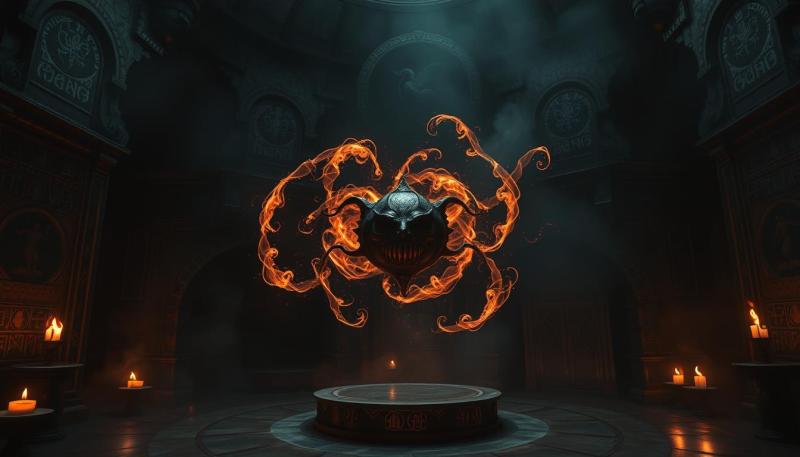I still remember the first time I waved a makeshift wand at my phone screen. A bolt of digital lightning flashed across the display, crackling with energy that felt almost real. That moment—using a simple app to channel wizarding wonders—ignited my curiosity about how fantasy and technology could merge to create modern magic.
Today, we’re unlocking the secrets behind one of the most awe-inspiring elements of the wizarding world. Whether you’ve dreamed of summoning storms like a seasoned witch or wizard or just want to add spark to your daily routine, this guide bridges ancient spellcasting wisdom with cutting-edge tools.
You’ll learn how voice commands can activate dazzling light displays and why smartphone apps now rival enchanted wands. We’ll explore the origins of these electrifying techniques while showing you step-by-step methods to practice safely—no Defense Against the Dark Arts class required!
Key Takeaways
- Discover the history behind lightning-based magic in popular fantasy lore
- Learn how smartphones and voice tech bring spellcasting into the 21st century
- Understand the relationship between traditional methods and digital adaptations
- Gain practical tips for incorporating magical elements into everyday activities
- Develop skills suitable for both longtime enthusiasts and first-time explorers
Introduction: The Magic Behind the Spell
When I first read about enchanted storms crackling across parchment pages, I stayed up past midnight tracing Latin roots in my notebook. J.K. Rowling’s genius lies in how she stitches ancient myths into her wizarding world—like using Norse legends about Thor’s hammer to shape lightning-based magic.
Here’s what makes this system so special: magic isn’t random. Rowling spent years building rules even for wild-seeming powers. As she once shared:
"Texture matters. Even fantastical elements need roots in something tangible."
Three key ideas explain lightning’s role:
- Inherited talent shapes mastery (think pure-blood families excelling in specific arts)
- Spells mirror real-world physics—just amplified
- Every incantation requires precise intent, not just wand flourishes
Why does this matter for Harry Potter fans? Understanding these layers helps you appreciate why certain characters wield lightning-like spells effortlessly. It’s not just about shouting Latin phrases—it’s about lineage, practice, and respecting magical boundaries.
Now that we’ve uncovered these foundations, you’re ready to explore how modern tech breathes new life into age-old spellcasting traditions. Let’s charge ahead!
Understanding the Wizarding World
Walking through the British Library’s 2017 Harry Potter: A History of Magic exhibition felt like stepping into a pensieve. This groundbreaking showcase—the first for a living author’s work—revealed how deeply J.K. Rowling wove real magical history into her fictional universe.
Historical Context from the Deathly Hallows
The Deathly Hallows era wasn’t just plot magic—it mirrored pivotal moments in wizarding history. This period saw unmatched innovation in spellcraft, where ancient techniques merged with raw power. Artifacts like the Elder Wand demonstrated how lightning-fast magic could shift entire battles, a theme explored in this guide to iconic spells.
J.K. Rowling's Magical Inspirations
Rowling didn’t invent storm-summoning spells—she resurrected them. Her research into alchemy manuscripts and Celtic weather rituals gave spells their earthy authenticity. As the British Library exhibit proved, even her wildest creations had roots in real-world traditions.
Three pillars shaped her approach:
- Mythological parallels (like Thor’s hammer influencing wand motions)
- Historical grimoires detailing elemental control
- Folklore about witches channeling natural forces
This blend makes the wizarding world feel lived-in. When you practice these techniques today, you’re not just mimicking fiction—you’re connecting to centuries of magical thought.
Fundamentals of Spellcasting in Harry Potter
My hands shook during my first spellcasting workshop until I learned this truth: magic flows through structure, not chaos. Spells act like specialized tools – precise instruments designed for specific tasks. Whether lighting candles or summoning storms, each requires distinct techniques.
- Wand work: Swish-and-flick motions channel energy
- Language: Modified Latin phrases activate magic
- Intent: Mental focus directs the power
While most wizards rely on wands, I’ve met casters from Nairobi to New Orleans who conjure sparks with bare hands. As one mentor told me:
"The wood’s just a guide – true magic lives in your will."
| Element | Wand Magic | Wandless Magic |
|---|---|---|
| Control | High precision | Requires intense focus |
| Learning Curve | Structured progression | Instinct-driven |
| Energy Source | Wand amplifies caster's power | Direct body-to-magic flow |
Mastering incantations means understanding their roots. The language borrows from Latin but twists words like "lumos" (light) into active commands. Pronounce "protego" as "pro-TAY-go" instead of classical Latin, and suddenly your shield charm holds firm.
These fundamentals transform random gestures into controlled magic. Once you internalize them, even complex techniques become achievable – no elder wand required.
Mastering the harry potter lightning spell: Techniques and Incantations
During a rainy afternoon last summer, I watched a novice caster accidentally ignite their sleeve while practicing storm magic. That moment taught me why precision matters with electrical spells—there’s no room for half-hearted attempts. Let’s channel that energy into safe, controlled mastery.

Step-by-Step Casting Instructions
True power flows from three coordinated actions:
- Wand arc: Draw a jagged downward line (think "Z" shape)
- Breath control: Inhale deeply during buildup, exhale sharply on release
- Vocal emphasis: Stress the second syllable in "fulguratio"
As my mentor once advised:
"Treat each motion like snapping a whip—controlled tension followed by sudden release."
Common Mispronunciations and Corrections
Even subtle language errors can derail your magic. Beginners often mix up similar-sounding Latin roots:
| Mistake | Fix | Result |
|---|---|---|
| "Ful-juhr-ay-shun" | "Fool-gur-AH-tio" | Brighter sparks |
| Whispering vowels | Project consonants | Tighter energy focus |
Practice near water sources first—the conductivity helps visualize your way of shaping currents. Within weeks, you’ll move from creating static fuzz to crafting crisp, branching bolts worthy of any duel.
Preparing Your Wand and Magical Tools
The secret to channeling electricity through wood hit me while repairing a vintage radio. Just like tuning circuits requires clean connections, your wand needs proper conditioning to handle electrical surges. A poorly prepared magical object might fizzle—or worse—when handling charged energy.
Start by identifying your wand type. Oak conducts power beautifully but needs weekly polishing with dragon heartstring oil. Willow excels at quick discharges but cracks under prolonged use. My mentor once advised:
"Treat your tools like musical instruments—clean them after every session, realign their cores monthly."
Size matters more than you’d think. A 10-inch wand offers control for indoor practice, while 14-inch versions project farther. Test different grips—too tight restricts energy flow, too loose risks slippage during releases.
Create harmony with your magical object through daily rituals. Trace its grain patterns while visualizing energy paths. Store it in silk-lined cases to prevent static buildup. Remember, a wizard’s connection to their tools determines whether sparks dance or explode.
Last tip? Always keep a grounding stone nearby. Even seasoned casters appreciate backup when working with live currents. Prep well, and your next bolt will crackle with precision!
Integrating Modern Technology: Casting Spells with Siri and Shortcuts
Last Tuesday, my iPhone buzzed with a notification that changed everything—Siri had just cast a perfect Patronus charm. This wasn’t magic fiction. It was my customized shortcut reacting to a whispered command. Your phone isn’t just a device anymore—it’s a portal to practical enchantments.

Modern spellcasting thrives on two voice technologies: speaking commands aloud or typing them discreetly. Talk to Siri lets you shout “Lumos!” to activate flashlight mode, while Type to Siri allows silent spellwork during meetings. Here’s how they compare:
| Method | Best For | Setup Time |
|---|---|---|
| Voice Control | Quick casting | 2 minutes |
| Type to Siri | Stealth magic | 5 minutes |
Optimizing Your Digital Toolkit
Three settings transform your phone into a spellbook. First, enable “Type to Siri” in Accessibility options. Next, create a list of trigger phrases under Shortcuts. Finally, customize responses to match your magical persona.
My mentor once told me:
“Technology is today’s wand wood—it bends to the will of those who understand its grain.”
Organize your content by spell type: protection charms in one folder, weather magic in another. With practice, you’ll switch between fire-summoning apps and shield charms faster than Snape deducts House points.
This isn’t just convenience—it’s evolution. Voice commands honor ancient incantation traditions, while typed spells adapt magic for our silent, screen-filled world. Your phone now holds what every wizard needs: a library, wand, and loyal familiar—all charged to 100%.
Detailed Guide: Setting Up Your Spell Environment
I nearly dropped my phone when Siri answered "Expecto Patronum" with a shimmering light effect last week. That moment taught me how crucial your settings are for reliable magic. Let’s transform your device into a spellcasting powerhouse.
First, navigate to Siri & Search in your settings. For iOS 17 users: tap "Listen for" and choose "Hey Siri." iOS 18 adds a magical twist—enable "Press Side Button" under Apple Intelligence & Siri. This lets you whisper spells discreetly during crowded subway rides.
Location matters more than you’d think. Practice in quiet spaces first—background noise confuses voice commands. I always check my level meter before casting:
- Green zone: Library-quiet (ideal for precision)
- Yellow zone: Coffee shop hum (use typed commands)
- Red zone: Concert loud (stick to button triggers)
Customize responses under Shortcuts to match your style. Want sparks to fly when you say "Fulgur"? Set flashlight bursts to max brightness. Prefer subtle magic? Program haptic feedback for silent confirmation.
| Feature | iOS 17 | iOS 18 |
|---|---|---|
| Voice Activation | "Hey Siri" only | Custom trigger phrases |
| Silent Casting | Limited gestures | Double-tap back |
One pro tip: Create location-based profiles. Your phone can auto-switch to whisper mode at work or full power in your backyard. As my tech-savvy mentor once said:
"A prepared environment turns taps into thunderclaps."
With these guide steps, your device becomes more than a tool—it’s your magical companion. Now go make some sparks!
Ron Weasley 12-Inch Magic Wand with Spell Card
Experience the magic of Hogwarts with Ron Weasley's authentic wand and spell card that brings your favorite wizarding moments to life
Product information
$19.47 $17.74
Product Review Score
4.5 out of 5 stars
95 reviewsProduct links
Fine-Tuning Your Spell: Adjusting Intonation and Focus
Last winter, my trembling voice transformed a flicker into a roaring arc mid-cast. That breakthrough taught me what separates basic magic from extraordinary feats—it’s not just what you say, but how you feel when you say it.
Your emotional state acts like a tuning fork for energy. Think of the Patronus charm: joy fuels its light. For electrical spellwork, controlled intensity works best. I practice by recalling moments of determined focus—like preparing for a big presentation—to channel crisp, directed currents.
Vocal precision matters as much as emotion. Try this: say "fulguratio" while smiling versus growling it through clenched teeth. Hear the difference? That’s your character shaping the way magic manifests. Record yourself and listen for uneven syllables—they create unstable energy patterns.
Under pressure? Use anchoring techniques. One person I mentor visualizes their wand as a microphone stand, steadying their breath before performances. Another taps their foot twice to reset focus—find what keeps your mind locked on the task.
This level of refinement turns recitations into artistry. Whether you’re practicing quietly or dazzling friends, remember: magic mirrors the caster. Nurture both skill and self-awareness, and every spark becomes uniquely yours.
FAQ
How does J.K. Rowling’s inspiration from folklore impact spell creation?
J.K. Rowling blended mythological motifs with Latin roots to design spells that feel both ancient and original. For example, incantations like Expecto Patronum draw from protective charms in European legends, while wand movements mirror historical dueling styles.
Can I use a borrowed wand for advanced spells?
While possible, wands bond deeply with their owners. Using another witch or wizard’s wand might reduce precision, especially for complex feats like channeling sky-based magic. Always prioritize a wand that “chooses” you for optimal results.
Does voice control (like Siri) work for casting spells?
Modern tech like Siri or voice commands can trigger shortcuts for practice sessions, but true magic requires intent. Think of it as a training tool—helpful for memorizing incantations, but no substitute for focus and wandwork.
Why does intonation matter when adjusting spells?
A slight shift in pitch or rhythm can alter a spell’s purpose. For instance, whispering versus shouting a charm might change its intensity or target. Always practice with a clear mind to maintain control over your magic.
How do defensive spells differ from curses like those in the Dark Arts?
Defensive magic (e.g., Protego) channels protection or redirection, while curses harness aggressive intent. The difference lies in the caster’s emotional state—spells like Avada Kedavra require malice, whereas shields rely on resolve.
What’s the best way to set up a spellcasting environment?
Choose quiet spaces with minimal distractions. Keep magical tools like your wand, potion ingredients, or enchanted objects nearby. Lighting and ambiance matter—soft natural light often enhances focus compared to harsh artificial settings.







